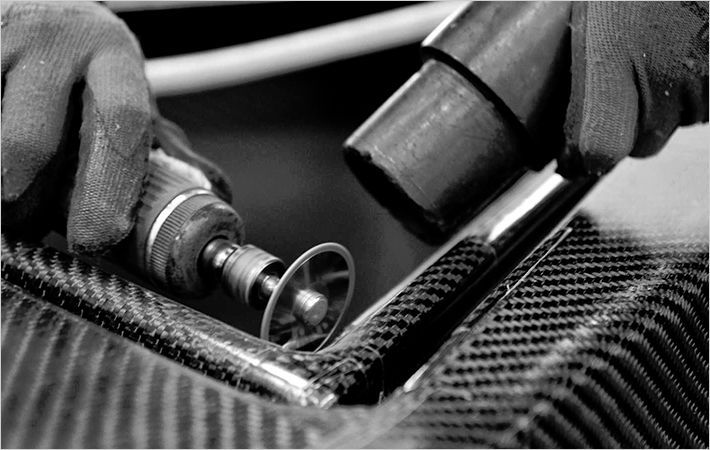The part is derived from the geometry of a structural battery tray for vehicles with an electric or hybrid drive. It combines tape-reinforced areas with an injection molded rib structure. The demonstrator is the result of an automated process sequence for processing Ultratape.
The two variants of the demonstrator part show the design freedom when using Ultratape. The first variant demonstrates the localized use of a tape insert in the form of a cross to reinforce specific load paths.
The second variant shows a larger reinforcing structure where the fiber orientation and lay-up sequence also follows the load cases. Each variant combines the new BASF Ultratape-based tape architecture with a matching overmolding compound, either Ultramid B3ZG7 COM, an especially high-impact polyamide grade or Ultramid B3WG12 COM for high stiffness.
The application of Ultratape makes it possible to satisfy the demanding requirements for mechanical stability in structural parts at the lowest possible weight. The part was produced under conditions near to large-scale manufacturing using the automated manufacturing process called "Ultralitec". This process was developed by the automotive supplier REHAU AG + Co and the research institute Neue Materialien Bayreuth GmbH.
Automated process sequence for composites parts with UD tapes
In the process sequence used here, the tape is first taken as a unidirectional (UD), impregnated fiber composite from the roll and laid down to form the desired lay-up sequence. The automated tape-laying step employs the production-scale RELAY technology available at the Fraunhofer Institute for Chemical Technology (ICT). Next, the 2-D tape lay-up is consolidated with the aid of a suitable press, i.e. pressed under temperature, after which it is formed and overmolded with Ultramid COM in the final process step to yield the 3-D part. This involved an industrial-scale automated production cell for thermoplastic hybrid parts at Neue Materialien Bayreuth GmbH, the heart of which is a 2,500 t injection molding machine.
Although in contrast to composite parts made from woven fabric laminates (mats), the thermoplastic tape requires more processing effort, it offsets this by offering a more application-specific, local reinforcement based on the actual load path. The multi-part tape process is also more complex, but has less trim waste and provides higher performance than an approach with a fabric laminate.
Ultracom: BASF enters the market for composite materials
The Ultracom product and service package introduced mid-2013 consists of Ultralaminate mats (laminates) and impregnated unidirectional, continuous fiber-reinforced Ultratape (UD tapes), the appropriate Ultramid COM overmolding compounds, a polyamide (PA) family from BASF and the associated design and manufacturing expertise.
With this package, BASF offers semi-finished thermoplastic materials together with the required injection molding compounds in a complete development platform. BASF presented the first part on the basis of the Ultracom package in June 2013. This part is a test component with 20 individual functions based on an Ultramid-overmolded laminate and was developed in-house for the new production cell at BASF.
BASF

